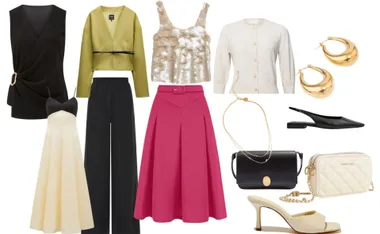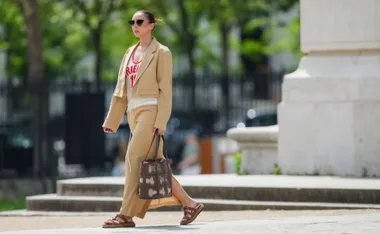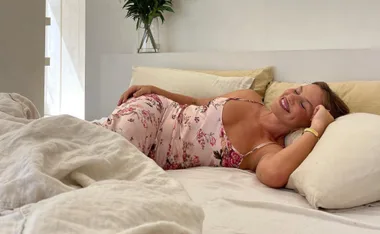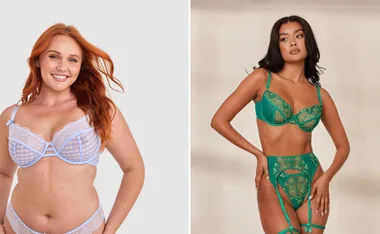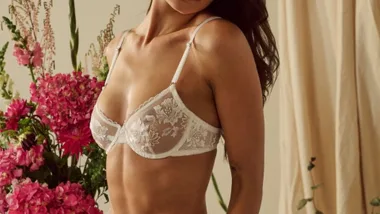Camilla Franks has clocked up more than a decade in the Australian fashion industry with her trademark prints and her hero piece – the caftan. Her global success just keeps growing, with 13 stores locally and 350 wholesale accounts worldwide. In part one of a three-part interview series, find out how Camilla turned her interest in fashion into one of Australia’s best-known brands.
It’s 11 years since you launched your business. Take us back to the start.
It happened quite organically. Rewind to 2004, I was a struggling actress, and I got really passionate about designing some of the costumes for my characters. To be honest, getting up to accept an Academy Award wasn’t going to happen any time soon! So I shifted my creativity into designing rehearsal gear and costumes, and from there it grew.
When I opened my first Bondi Beach House – which we still have today – I was everything from the designer, courier service and production manager to the accountant. With only one phone line, I would pretend to transfer calls to different departments – it was total smoke and mirrors!
That was my playground to learn all things business in fashion and retail. I felt like I was in the ’60s, it was this bohemian den filled with guys floating in caftans and gorgeous girls – my own wonderful riad – and all of Bondi was welcome.
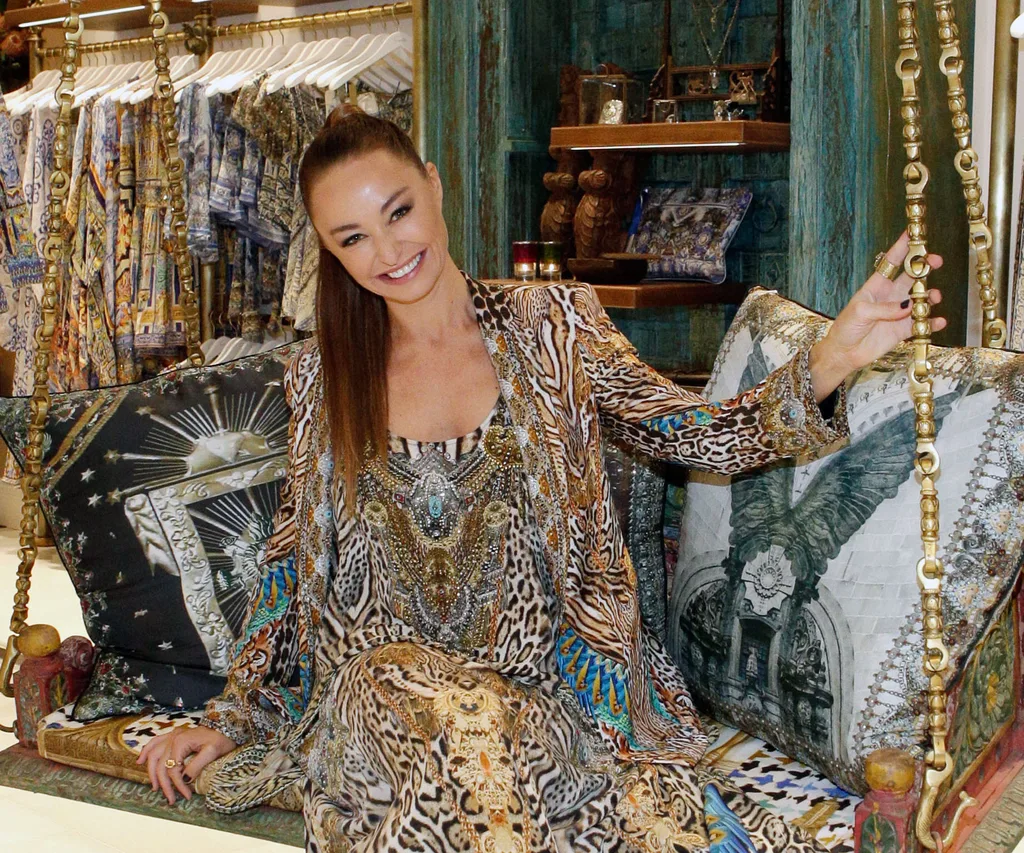
Did you have any training?
Mum was a stylist and I sort of picked up her eclectic sense of style, and Dad was an architect. His passion is art. He taught me how to sketch and things like that. At school I was always paintbrush in hand in the art room – or in the headmistress’s office. I was always in trouble!
When I left school I worked in advertising, so that gave me the skills to run a business. It gave me that producer’s mind. You need that structure, to be aware of honouring timelines. Acting also helped because you’ve got to be able to sell yourself. A lot of designers are actually quite shy, they work in the studio on their own, so being able to get up to present was really valuable.
We’ve heard a lot about your successes, what about the challenges you faced?
I was a one-man band for several years and doing that means 24/7, and you can’t sustain that. With all the travel that I do, it’s not a real life a lot of the time. You disconnect from family and friends. I struggled with that a lot. I ran myself into the ground, which gave me health problems. I was concentrating on the business, but not myself. I didn’t understand the importance of balance. I had Bell’s palsy, my nervous system was shot. I was physically, emotionally and mentally burnt out. I finally realised I am human, God damn it! Wonder Woman kind of lost her cape.
If you could wind the clock back, what would you do differently?
I would’ve slowed down a bit. And for years I didn’t have the right team, but now I’ve found my tribe. I’ve learned that you need people who accept you as your true self. I think a lot of the time you hide a part of yourself because you fear judgement. You need people who can take your business to the next level and bring that sense of maturity, bring that sense of management in, to take that pressure off you.
Is the fashion industry as cut-throat as people might imagine?
It seems competitive, but it’s actually a vibrant, supportive community that really respects each other’s talents, so I think it’s the opposite. When I first started, I had David Briskin and the girls from Sass & Bide really nurturing me and helping me, because I had no idea what I was doing. I’ve got this whole Richard Branson philosophy – “Screw it, let’s do it!”
It’s harder than it looks from the outside. You need to know everything about everything. I had to all of sudden learn how to do all my own invoices, and really get IT-savvy. All the things that at school I was really bad at have become interesting to me now.
How do you develop one of your prints?
I basically throw myself on an aeroplane and find a place that I want to get inspired by and immerse myself in the culture – their tribe, their food, their colour palette – for three weeks. I have very little communication with the outside world. I probably take about 15,000-20,000 photographs. We then catalogue them and I start developing the prints based on different tribes or places. We start [working our way through the images] coming up with embroidery swatches, and silhouettes based on certain things. Those prints are the foundation of my collections.
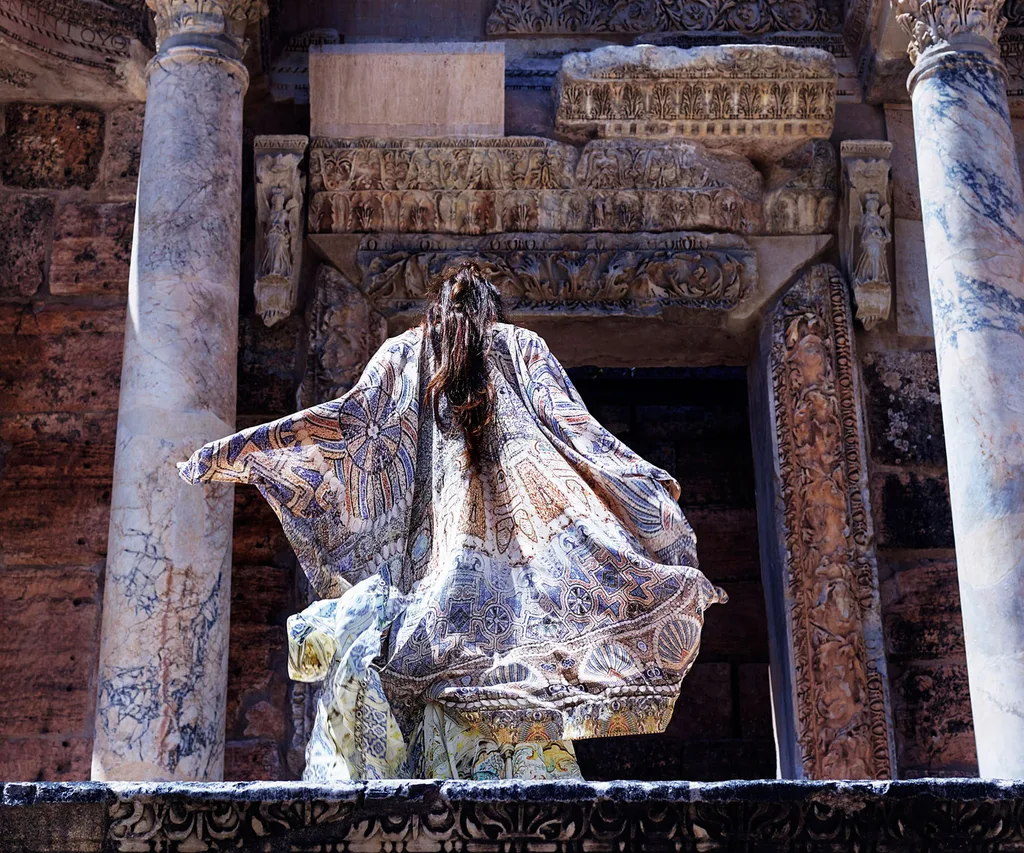
How long does it take from that initial trip to the finished garment?
It’s about eight months, but it’s not long enough! In the world of fashion there’s never enough time, we’re always chasing our tail because we’re not just designing one collection [at a time]. I’m designing mainline, ready-to-wear, kids, shoes, jewellery, other accessories, homewares – and it’s all got to look right in-store. It’s like putting a big, confusing puzzle together.
How did the caftan become your signature piece?
For me the caftan is where it began. Mum always wore caftans – I only ever knew her wearing that kind of dress. And what I love about the caftan is that it really does make you feel quite beautiful, it’s so comfortable. I love it because it really celebrates my prints, which are like my travel journal. It tells the story of my travel, my life, my passions and different cultures. And it’s versatile. You can style the caftan your own unique way. Whether you’re going from beach to bar, or whatever, you can manipulate the piece to suit where you’re going. Obviously I spend my life on aeroplanes, and they’re easy to pack!
Why do you think the caftan has become so popular generally?
Our philosophy is that every woman has the right to feel beautiful no matter what age, shape or size. And I think it’s because we’ve stuck to that with all our designs. I don’t follow trends or try to be cool or conform to what a fashion designer’s meant to be. We’ve got a different DNA and handwriting to most other brands.
We’ve been lucky to have a huge celebrity following – from Beyoncé to Oprah. Kate Hudson is a gorgeous one, and her mum, Goldie Hawn, Nicki Minaj, Jennifer Lopez.We do off-the-chart fashion shows that create the full sensory experience. Of course, I have an amazing team. I love that saying [from Yoko Ono]: “A dream you dream alone is only a dream. A dream you dream together is reality.”
I think a lot of brands struggle because there is a lot of competition out there. If you’re trying to have a globalised collection, there are lots of people around the world doing what you do and sometimes better, so you’ve got to be authentic. If you’re authentic to who you are, then you’ll find your tribe.
We’ve been successful because we’ve stayed true. And I love my business fiercely. I believe in my baby and my vision with my whole heart. I have a very tight focus on the company and the brand and what it stands for and delivers.
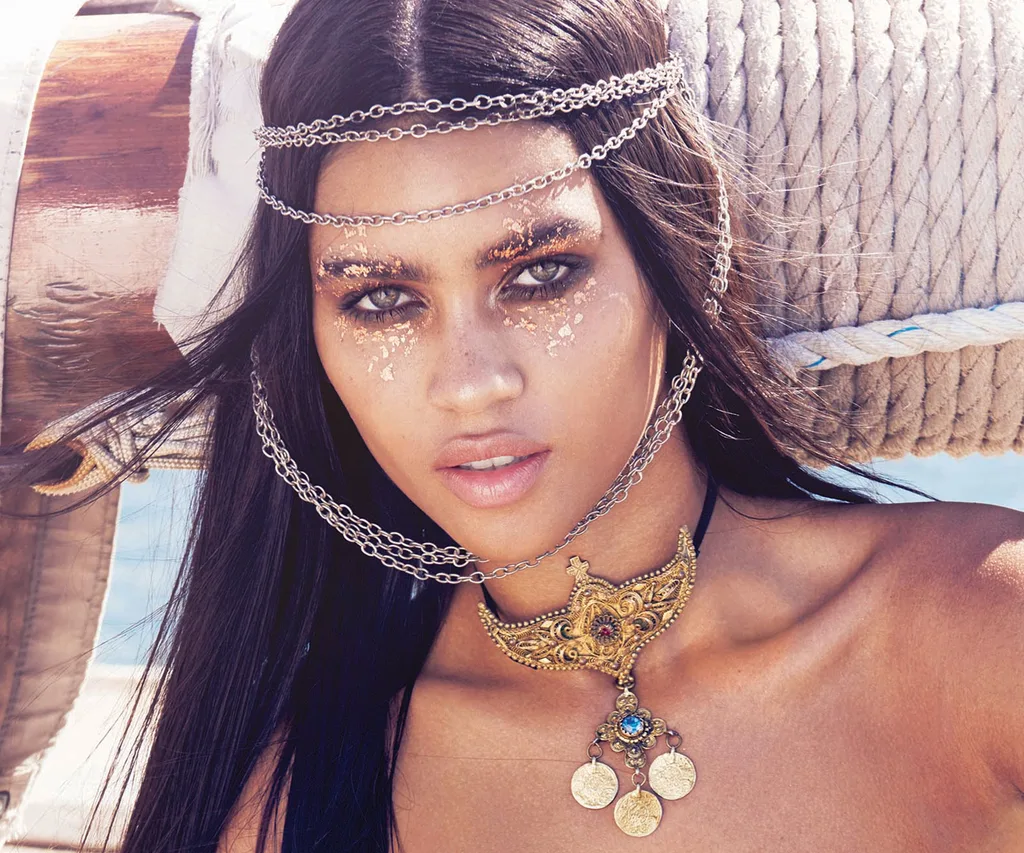
What does the Camilla Franks empire involve now?
We have 13 retail stores; we have a warehouse in Sydney and India; we offer seven different collections; we have a head office in Sydney, and operations in my second home, India; we have 350 wholesale accounts worldwide; and the “Camilla Worlds” within David Jones. I’ve been with David Jones since the start.
How important are big retail partnerships?
You need big partnerships to get your MOQs [Minimum Order Quantities] up so you can work with some of the manufacturers. If you’re in David Jones or Neiman Marcus or Bergdorf Goodman, people will look, and listen, and respect the brand.
Was extending into menswear a natural progression?
It was natural for me because when I first started with the Bondi Beach House in 2004 I would get the surfie boys in, or the festivalgoers, and they always wanted something like a caftan that they could wear, that was a bit more hippie and laid-back. Boardshorts are the natural thing to follow. And men do love wearing print – and wives love having their husbands wearing matching things and going to parties.
Tell us about doing business in India.
I’ve got a beautiful big home over there with seven crazy street dogs – it’s madness! I do 80 per cent of my manufacturing out of India. We do all the printing, beading and a lot of the design over there.
I started working there seven years ago and found a family I really connected with. I’ll be spending Christmas with them this year and there’s a real relationship there.
I spend about half the year in India. We’ve got two full-time people there – and part of my team is always there working. We’ve built our Indian family from a small factory of 20 people to nearly 1000. It’s a huge achievement and gives me a lot of pride. We manufacture out of Indonesia and China, as well.
I think you have a great responsibility as a fashion designer to ensure the suppliers you work with are compliant. The Camilla company objective is to only work with ethically, socially, morally and environmentally compliant manufacturers and we work hard to make sure that happens. We’ve got a very dedicated team who travel regularly to all our vendor partners to ensure these standards are met.
What’s next?
My bigger picture for this company is to help women in developing countries by providing them with skills and education and, most importantly, a safe community, that’s really what makes me tick. I love that saying from Steve Jobs: “Being the richest man in the cemetery doesn’t matter to me. Going to bed at night saying we’ve done something wonderful, that’s what matters to me.” I just want to do something that I’m proud of. Money should never be the sole focus.
On my business bucket list, I want to do New York Fashion Week, Paris Fashion Week, Milan Fashion Week. We’re going to start rolling out international retail stores next year. I want to have a Camilla restaurant, a full lifestyle department store with a bar, a healing retreat in Africa, a rehabilitation sanctuary in India, and a Camilla hotel!
So dream big?
Yeah – dream big! What is that other saying? “Self-doubt kills more dreams than failure ever will.” [US writer/philosopher Suzy Kassem].
**Dreaming of a future in the fashion industry? Visit Open Colleges.
Cameron Bayley is a fashion/arts writer, with a decade’s experience in magazines. He is currently the associate editor of Emporium magazine.
Brought to you by Open Colleges](http://www.opencolleges.edu.au/careers/fashion|target=”_blank”).


